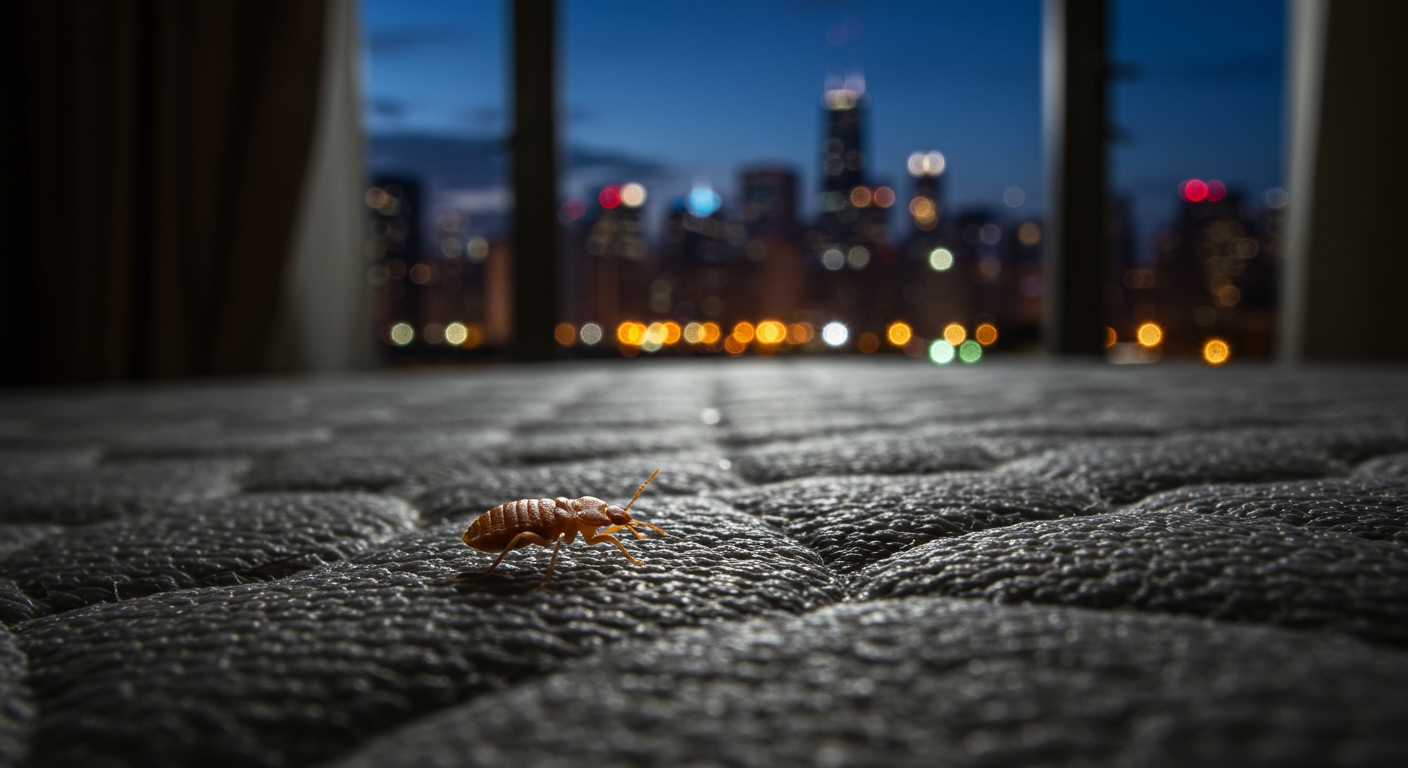Chicago, Illinois, has once again claimed the unwelcome distinction of being the most bed bug-infested city in the United States, according to the latest analysis released by pest control leader Orkin.
For the fifth consecutive year, the Midwestern metropolis has held the top position on the Orkin 2025 Top 50 Bed Bug Cities List. The ranking, a closely watched indicator of pest activity across major urban centers, is compiled based on the number of bed bug treatments performed by Orkin professionals from May 15, 2024, to May 14, 2025.
While Chicago’s dominance at the top persisted, the 2025 list reveals significant shifts in the bed bug landscape across the country, with several cities experiencing dramatic changes in their rankings.
The Persistent Challenge in Chicago
Chicago’s continued presence at the apex of the list underscores an ongoing public health and urban challenge. The ranking methodology, relying strictly on the volume of professional treatments, suggests a high level of reported activity and infestation requiring expert intervention within the city limits and surrounding areas covered by Orkin’s service network.
Bed bugs, scientifically known as Cimex lectularius, are notoriously difficult to eradicate. Their ability to hide in small crevices, reproduce rapidly, and survive for extended periods without feeding makes them a formidable foe for residents and pest management professionals alike. Chicago’s size, density, and status as a major travel hub likely contribute to the perpetual challenge of managing these pests.
Shifting Landscape: Notable Climbers
Beyond the top spot, the 2025 list saw some of the most significant movements in recent years. Hartford, Connecticut, made a remarkable debut within the top 50, entering the list at No. 35. This represents a staggering climb of 48 spots, indicating a substantial increase in treatment activity reported by Orkin in the area.
Milwaukee, Wisconsin, also saw a notable rise, moving up 15 spots on the list. These increases highlight the dynamic nature of pest populations and may reflect factors such as increased travel to or from these areas, greater public awareness leading to earlier detection and reporting, or changes in local conditions favoring bed bug proliferation.
The ascent of cities like Hartford and Milwaukee serves as a reminder that the bed bug challenge is not confined to the traditionally high-ranking urban centers but is a widespread issue impacting communities of various sizes across the nation.
Declining Infestations? Cities on the Downswing
Conversely, several prominent cities saw their rankings drop in the 2025 analysis. Philadelphia, Pennsylvania, fell to No. 24, while New York, New York, dropped to No. 15. Charlotte, North Carolina, also experienced a notable decline, landing at No. 31.
These drops do not necessarily indicate a complete absence or eradication of bed bugs in these cities. They suggest a decrease in the relative number of professional treatments performed by Orkin compared to the ranking period in the previous year. This could be influenced by various factors, including the effectiveness of ongoing control programs, changes in population movement patterns, or shifts in how infestations are reported and addressed within those metropolitan areas.
A Historical Perspective and Modern Challenge
Orkin highlights that bed bugs are an ancient adversary, having been present for over 20,000 years. Their long history underscores their resilience and adaptability. Despite modern pest control techniques, these insects continue to thrive in human environments, particularly in urban settings.
Their resurgence in recent decades, following a period of decline, is often attributed to increased domestic and international travel, changes in pest control practices (such as the phasing out of certain broad-spectrum insecticides), and the development of insecticide resistance in bed bug populations.
Expert Advice for Travelers and Residents
Given the ease with which bed bugs can spread, often by hitchhiking on luggage or clothing, Orkin stresses the importance of vigilance for both residents and travelers.
With upcoming travel periods, the company particularly recommends proactive inspection measures. Travelers are advised to carefully inspect their hotel rooms upon arrival, checking mattresses, headboards, and upholstered furniture for signs of infestation, such as small rust-colored spots (bed bug excrement), shed skins, or live insects. Additionally, inspecting luggage before bringing it back into the home is crucial to prevent inadvertently transporting bed bugs.
General vigilance in the home, including regular inspections of sleeping areas and being cautious about bringing in used furniture or clothing, remains a key strategy in preventing infestations or detecting them early before they become widespread and difficult to manage.
The Orkin 2025 list serves as an annual reminder of the persistent nature of bed bug infestations in urban environments and the need for ongoing awareness and preventative measures across the country.














